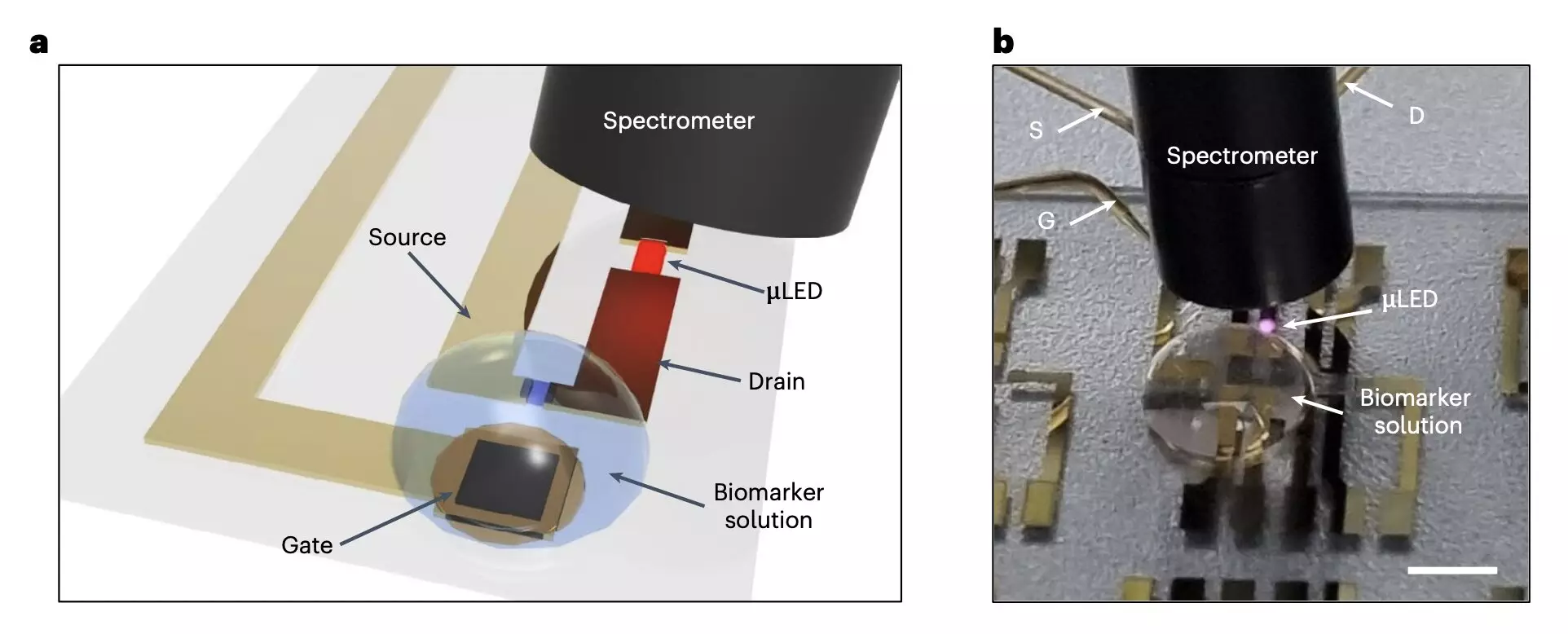In the continuously evolving field of electronics, particularly within the realm of health technologies, researchers are making strides by inventing specialized devices that can seamlessly monitor various biological indicators. The evolution of wearable and implantable technologies has fundamentally shifted how we understand and track our health, bringing us closer to real-time health monitoring that can offer insights previously beyond our reach.
At the forefront of this revolution are Organic Electrochemical Transistors (OECTs). These innovative components leverage flexible organic materials that have the ability to amplify biological signals, making them ideal candidates for developing health-monitoring technologies. Unlike conventional electronics, which often rely on rigid materials, OECTs maintain flexibility, opening up new possibilities for comfortable and unobtrusive wearables. They provide the capability to sense various health markers such as glucose, lactate levels, cortisol, and even fluctuations in pH, paving the way for more comprehensive monitoring of health conditions.
The ability of OECTs to pick up on subtle biological signals is particularly valuable in both athletic and healthcare contexts. For athletes, being able to monitor physiological responses can optimize training and performance, while in medical settings, continuous monitoring can provide timely insights into patient health trends. This shift from sporadic check-ups to continuous monitoring could lead to significant changes in how healthcare professionals manage chronic conditions.
Despite their benefits, OECTs do face challenges, particularly concerning data transmission. Once biological signals have been detected and recorded, this information needs to be communicated to external devices for further analysis—a process that typically involves the integration of wireless communication components. Herein lies a challenge due to the conventional materials used in these circuits, which often lack flexibility and can make wearable devices bulky. This can detract from the comfort and practicality of health-monitoring devices that are meant to be worn throughout daily life.
Recent advancements, however, are beginning to bridge this gap. Researchers at the Korea Institute of Science and Technology (KIST) have unveiled a novel solution that harmonizes organic and inorganic components to achieve both utility and comfort. Their development involves a sophisticated wireless device capable of monitoring several biomarkers, including glucose, lactate, and pH levels, while maintaining a remarkable thickness of just 4 micrometers.
KIST’s breakthrough integrates OECT biochemical sensors with inorganic micro-light-emitting diodes (μLEDs) on a parylene substrate, demonstrating a remarkable achievement in hybrid device architecture. The OECT sensors utilize a polymer blend that includes gold electrodes and two ionomer mixtures, resulting in effective sensor performance. The ingenuity of this design lies in its ability to change the current flow depending on the concentration of specific biomarkers, which then regulates the resulting light from the μLEDs. This dynamic interplay allows for precise monitoring of health indicators, showcasing how integrated systems can lead to advanced diagnostics without compromising on comfort or flexibility.
The innovative features of this device allow it to act not just as a sensor, but also to facilitate near-infrared imaging that can predict the concentration of various biomarkers. The implications of this dual capability could be profound, leading to improved methods for diagnosing conditions quicker and more accurately.
As testing progresses and the technology matures, there’s significant potential for this device to revolutionize wearable technology. Future plans may include refining its design for even greater efficiency and integrating alternative energy sources, such as soft batteries or solar panels, to make wearables entirely self-sufficient. This would not only enhance their utility but also make them more sustainable, aligning with a broader push for environmentally friendly technology.
The fusion of organic and inorganic materials in wearable health monitoring devices exemplifies a bright future for health technology. As researchers continue to innovate and refine these systems, the prospect of personalized, real-time health monitoring will become not just a possibility but a reality that can fundamentally change health management for individuals across various domains.

